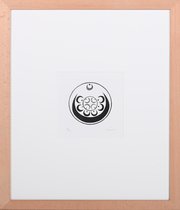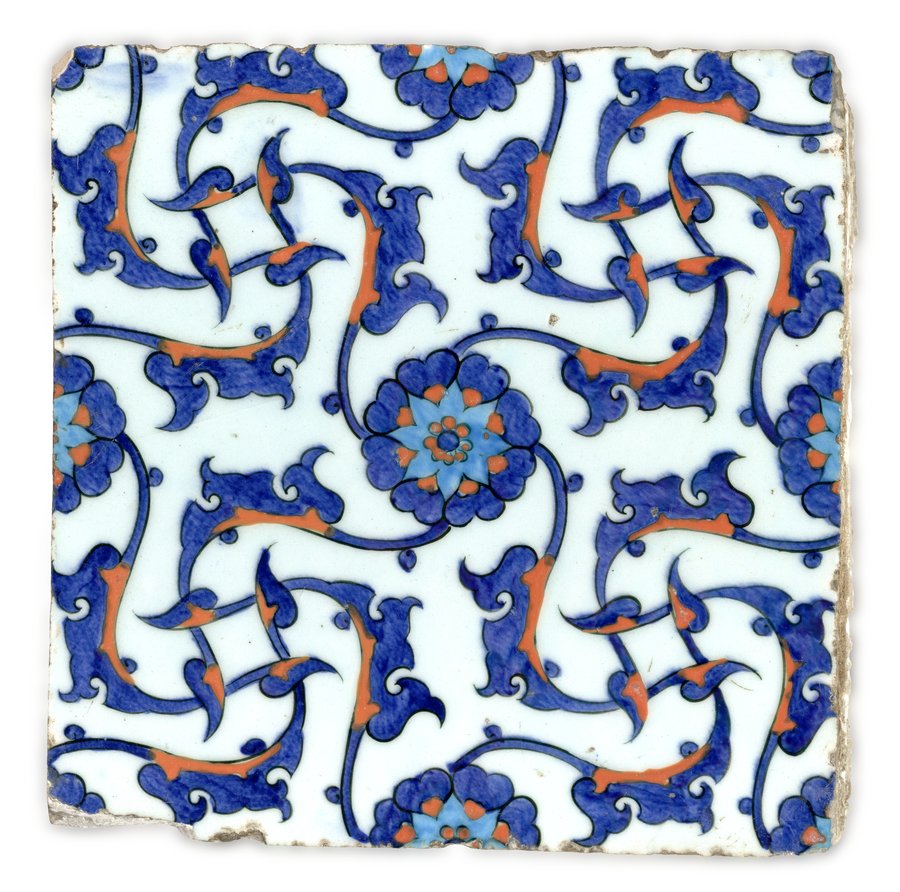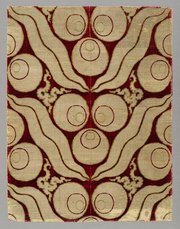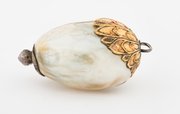
Square Iznik Tile
Museum of Islamic Art
- Title:
- Square Iznik Tile
- Production place:
- Iznik
- Date:
- 1550 - 1570
- Period:
- Ottoman
- Title:
- Square Iznik Tile
- Production place:
- Iznik
- Date:
- 1550 - 1570
- Period:
- Ottoman
- Material:
- Fritware, Pigment, Glaze
- Technique:
- Underglaze painting, Glazing
- Dimensions:
- 24.6 × 24 × 2.5
Iznik pottery is named after the town of Iznik, in western Anatolia (modern day Turkey), where it was initially made. The earliest evidence of Iznik production occurred during the reign of Ottoman Sultan Mehmed II (r. 854-886 AH/1451-81 CE), whose appreciation for fine blue and white Chinese Ming porcelains inspired him to start making similar ceramics. However, a shift occurred a century later when Sultan Suleiman the Magnificent (r. 926-974 AH/1520-66 CE) revitalized Iznik production through his commissioning of tiles made to decorate his newly built mosque in Istanbul. Shortly thereafter, Iznik production expanded, with new forms, colours and patterns introduced. This Iznik tile, produced between 956-977 AH/1550-1570 CE, is an example of the market expansion, shown by the usage of colours like turquoise and orange, in addition to the usual blue and white colours. It is beautifully decorated with floral and arabesque designs and was probably part of wall decorations of an important building.



